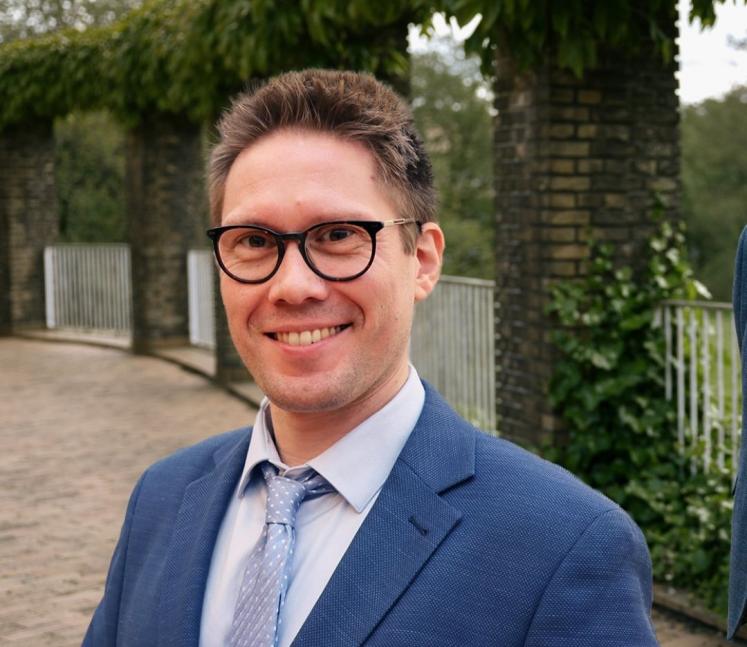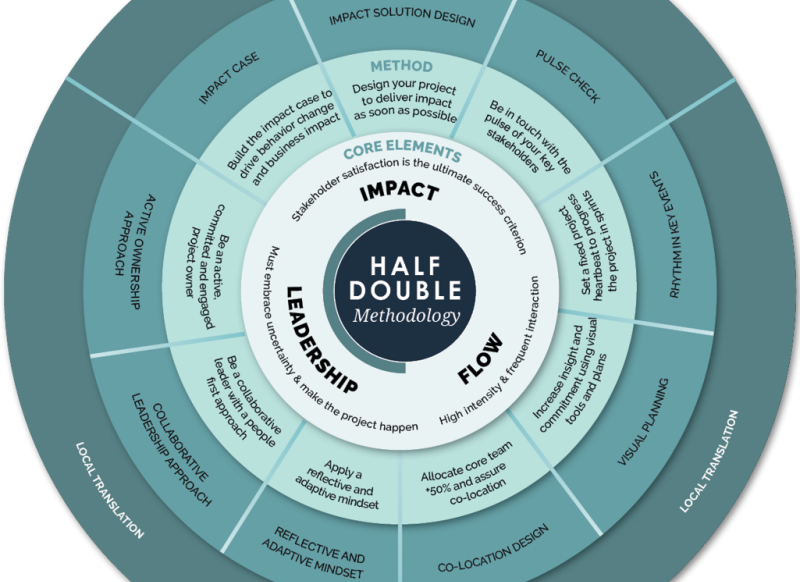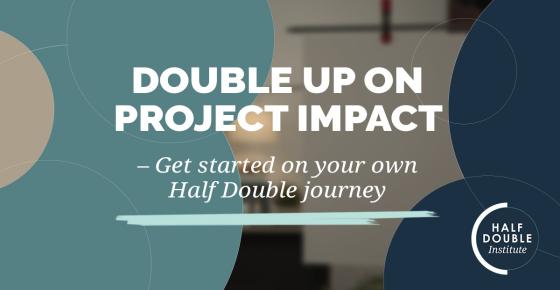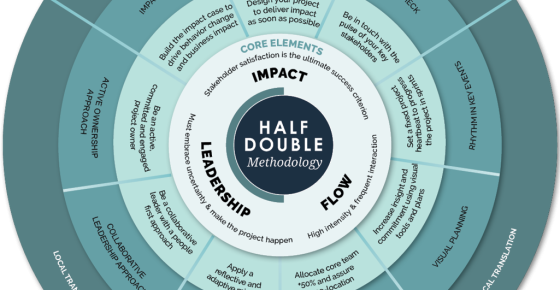Half Double frees up time to focus on value creation
Interview with digital health researcher Ulrik Bak Kirk about his experience with the Half Double methodology
1. Could you briefly introduce yourself and tell us a bit about your background in project management?
My name is Ulrik Bak Kirk and I am a researcher in digital health. I have a background in the humanities, where I supplemented my history studies with the more practically orientated film and media studies. Already during my studies, I got used to producing something for a given time in a very practical way. This experience, combined with a student job in healthcare, gave me the courage to make a product for general practitioners to ease the transition from medical school to having my own clinic, with a focus on everything non-clinical.
To better equip myself for this task, I chose to self-finance some IPMA courses because the theoretical introduction to project management was completely absent from my study programme. This gave me a theoretical base to complement my practical experience and through my project for GPs (Praksis Plus) I had the opportunity to run a project from start to finish - it was a great learning journey.
Five years ago, I moved to Aarhus and joined a research centre focusing on digital public health. Here I became acquainted with other ways of running projects, not least agile methods such as Scrum. Hence, I had worked with both a traditional and a more agile project approach before I came across Half Double.
2. How did you start working with Half Double?
It was in connection with a large EU project on endometriosis (FEMaLe), which I managed to put together a team and obtain EU funding for. During the application process, we searched the market to find an agile method with a special focus on value creation. Through a project manager colleague and then Per Svejvig, I was introduced to Half Double. I realised that it covered both domains, both the traditional and the agile approach, and it was really exciting in our context, because in the large FEMaLe project we had 10 quite different work packages that required different tools.
3. How has the Half Double methodology changed your approach to project management?
The systematic focus on the 'Impact Case' is the overall thing that makes a huge difference. We have broken the large, complicated and multi-year project down to one impact case per work package, where we work in a cycle of six months at a time, so we get out of the box. In this way, we've broken down the complexity of the project, which has been very beneficial.
Then there's the visual planning, where we use a large Miro board to strengthen our dialogue and create an overview. The flow part of establishing a fixed rhythm is another one of the very low-practical things that just works really well in terms of creating momentum.
That said, the big change for me compared to previous projects has been the management approach with the close connection to the project owner, which in my case is my head of department. It makes a huge difference in practice.
It's also been really nice to get methodological support for the importance of a 'people first' perspective, which - perhaps because of my humanities background - I intuitively found natural and important.
I really like that we not only focus on the product, but also focus on adoption and who needs to do something different in order to achieve real change. How do we use the product? How do we create a good learning environment? What is the next step? It gives credibility to have a methodology that inherently incorporates this dimension, because it is crucial to achieve a noticeable and measurable effect.
4. How do you measure success in your projects, and how does Half Double help you achieve and evaluate this success?
With our ‘sponsor’ the EU, we have a very long contract with specific requirements, which in some ways is actually very anti-Half Double because it doesn't really say anything about the value we create. So we use Half Double and specifically the impact case we make for each work package to keep a tight rein on how we create real value. This also means that we continuously change our behaviour if we can see that something is not having an effect both quantitatively and qualitatively. We create KPIs for each work package and hold regular intensive meetings where we also nudge people to focus on value creation.
At the same time, we systematically communicate things internally and externally so they can make a difference. Conversely, we don't burden each other with purely ritual reporting that steals time from the core task without creating real value - and that's something a busy clinician or researcher likes.
Now we've decided to scrap our newsletter because it didn't create enough interaction. What we do concretely is that we co-create KPIs in the work packages, and it is in that process that we ensure behavioural change. We make sure we systematically get things out there and constantly learn new things.








